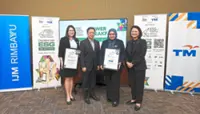IN school, we had to write essays on the consequences of air pollution with cars being a contributor, and ways to curb it such as carpooling or taking public transportation so there will be fewer cars on the road.
Today, we witness the consequences of human-induced climate change that has turned sinister: the accelerated growth of flowers at earth’s bone-chilling and most inhospitable continent Antarctica, rising sea levels, and even frequent flooding right in our backyard.
Already a subscriber? Log in
Save 30% OFF The Star Digital Access
Cancel anytime. Ad-free. Unlimited access with perks.





